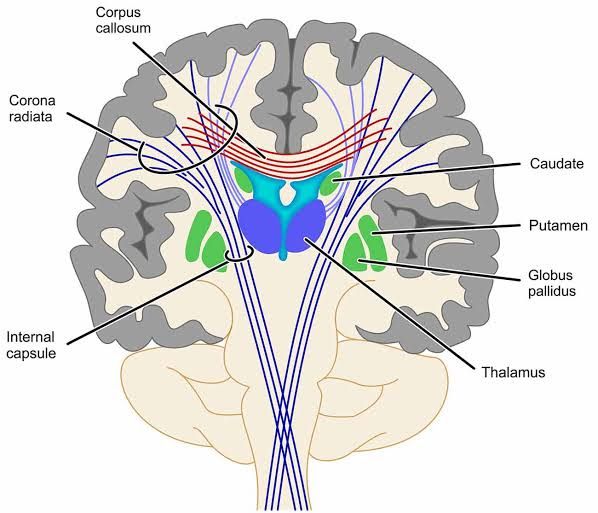
What is the corona radiata penetrating enzyme?
Answer
385.8k+ views
Hint: This is an enzyme that has a vital role in fertilization of the ovum by sperm. This enzyme is actually present in the sperms. Fertilization is defined as the process where the gametes (sperm and the ovum) fuse and ultimately a diploid zygote is formed.
The ovum is surrounded by three layers from inside to outside- Zona pellucida, Corona radiata, and cumulus oophorus (consisting of granulosa and follicle cells). For a sperm to enter the ovum, it has to cross these three layers, or you can call them barriers, at first.
Complete answer:
Many sperms after insemination reach the site of fertilization and adhere to the ovum. But only one sperm will be able to successfully enter into the ovum. The sperms after adhering to the surface of the egg (Agglutination), start a reaction known as acrosomal reaction. From the acrosomes of the sperms, hydrolytic enzymes or sperm lysins are released which include:
Hyaluronidase: Dissolves the hyaluronic acid responsible for cementing of follicle or granulosa cells.
Corona Radiata Penetrating Enzyme (CPE): Dissolves and digests corona radiata.
Zona lysin/Acrosin: Dissolves and digests the zona pellucida.
Contact of acrosomes stimulates development of an outgrowth by the oocyte called fertilization cone or cone of reception.

Another reaction occurs during syngamy which is known as cortical and zona reactions. As the sperm head comes in contact with the fertilization cone, it causes opening of
Note:
Disintegration of cumulus oophorus and corona radiata takes place by the liberation of hyaluronidase from the acrosomal cap. Zona pellucida is now exposed. The sperm head now binds to specific glycoprotein receptors ZP3 of zona pellucida and induces acrosome reaction to release acrosin which digests the zona pellucida. Now the sperm head appears in perivitelline space and fuses with the vitelline membrane. This is done by two disintegrating peptides carried by the sperm head which open the gate for sperm to enter in the oocyte. As a result, a calcium wave sets in throughout the oocyte cytoplasm. This initiates completion of a second meiotic division of the secondary oocyte which results in the formation of a mature ovum with extrusion of the second polar body.
The ovum is surrounded by three layers from inside to outside- Zona pellucida, Corona radiata, and cumulus oophorus (consisting of granulosa and follicle cells). For a sperm to enter the ovum, it has to cross these three layers, or you can call them barriers, at first.
Complete answer:
Many sperms after insemination reach the site of fertilization and adhere to the ovum. But only one sperm will be able to successfully enter into the ovum. The sperms after adhering to the surface of the egg (Agglutination), start a reaction known as acrosomal reaction. From the acrosomes of the sperms, hydrolytic enzymes or sperm lysins are released which include:
Hyaluronidase: Dissolves the hyaluronic acid responsible for cementing of follicle or granulosa cells.
Corona Radiata Penetrating Enzyme (CPE): Dissolves and digests corona radiata.
Zona lysin/Acrosin: Dissolves and digests the zona pellucida.
Contact of acrosomes stimulates development of an outgrowth by the oocyte called fertilization cone or cone of reception.

Another reaction occurs during syngamy which is known as cortical and zona reactions. As the sperm head comes in contact with the fertilization cone, it causes opening of
Note:
Disintegration of cumulus oophorus and corona radiata takes place by the liberation of hyaluronidase from the acrosomal cap. Zona pellucida is now exposed. The sperm head now binds to specific glycoprotein receptors ZP3 of zona pellucida and induces acrosome reaction to release acrosin which digests the zona pellucida. Now the sperm head appears in perivitelline space and fuses with the vitelline membrane. This is done by two disintegrating peptides carried by the sperm head which open the gate for sperm to enter in the oocyte. As a result, a calcium wave sets in throughout the oocyte cytoplasm. This initiates completion of a second meiotic division of the secondary oocyte which results in the formation of a mature ovum with extrusion of the second polar body.
Recently Updated Pages
Express the following as a fraction and simplify a class 7 maths CBSE

The length and width of a rectangle are in ratio of class 7 maths CBSE

The ratio of the income to the expenditure of a family class 7 maths CBSE

How do you write 025 million in scientific notatio class 7 maths CBSE

How do you convert 295 meters per second to kilometers class 7 maths CBSE

Write the following in Roman numerals 25819 class 7 maths CBSE

Trending doubts
Difference between mass and weight class 10 physics CBSE

SI unit of electrical energy is A Joule B Kilowatt class 10 physics CBSE

Discuss the main reasons for poverty in India

Write an application to the principal requesting five class 10 english CBSE

The capital of British India was transferred from Calcutta class 10 social science CBSE

Identify the phrase s in the following sentence The class 10 english CBSE




